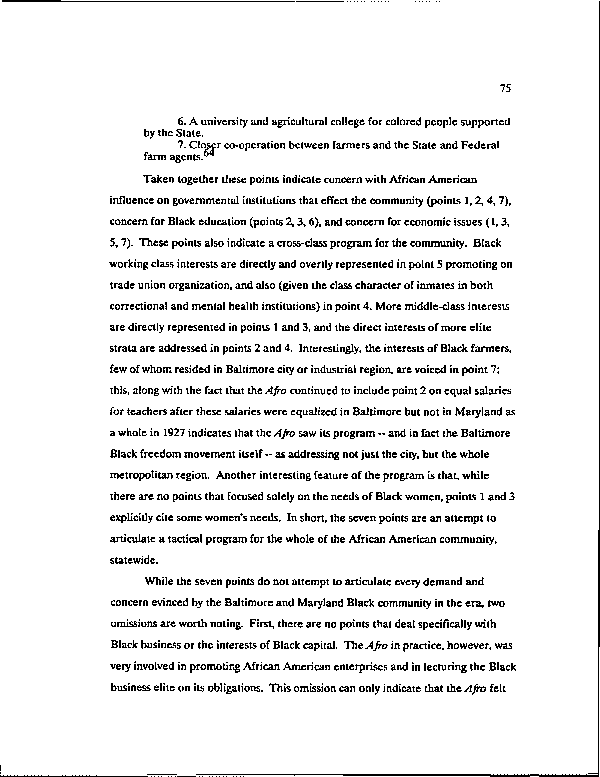|
75
6. A university and agricultural college for colored people supported
by the State.
7. Closer co-operation between farmers and the State and Federal
farm agents.
Taken together these points indicate concern with African American
influence on governmental institutions that effect the community (points 1,2, 4, 7),
concern for Black education (points 2,3, 6), and concern for economic issues (1, 3,
5,7). These points also indicate a cross-class program for the community. Black
working class interests are directly and overtly represented in point 5 promoting on
trade union organization, and also (given the class character of inmates in both
correctional and mental health institutions) in point 4. More middle-class interests
are directly represented in points 1 and 3, and the direct interests of more elite
strata are addressed in points 2 and 4. Interestingly, the interests of Black farmers,
few of whom resided in Baltimore city or industrial region, are voiced in point 7;
this, along with the fact that the Afro continued to include point 2 on equal salaries
for teachers after these salaries were equalized in Baltimore but not in Maryland as
a whole in 1927 indicates that the Afro saw its program - and in fact the Baltimore
Black freedom movement itself — as addressing not just the city, but the whole
metropolitan region. Another interesting feature of the program is that, while
there are no points that focused solely on the needs of Black women, points 1 and 3
explicitly cite some women's needs. In short, the seven points are an attempt to
articulate a tactical program for the whole of the African American community,
statewide.
While the seven points do not attempt to articulate every demand and
concern evinced by the Baltimore and Maryland Black community in the era, two
omissions are worth noting. First, there are no points that deal specifically with
Black business or the interests of Black capital. The Afro in practice, however, was
very involved in promoting African American enterprises and in lecturing the Black
business elite on its obligations. This omission can only indicate that the Afro felt
|

